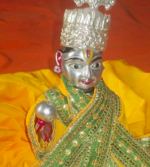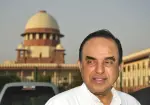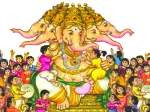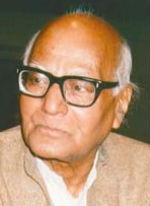![]() Contrary to the noise in several quarters, a careful analysis of the data shows that minorities are not just protected, but are indeed thriving in India. – A. Surya Prakash
Contrary to the noise in several quarters, a careful analysis of the data shows that minorities are not just protected, but are indeed thriving in India. – A. Surya Prakash
An important study undertaken by the Economic Advisory Council to the Prime Minister (EAC-PM)—an analysis of the evolving status of religious minorities around the world—provides significant and renewed evidence of the demographic decline of the majority and the growing population of minorities in most nations including India.
The working paper, which examined demographic change between 1950 and 2015 across 167 nations, found that the share of the majority in India—Hindus—declined by 7.8 percent to 78.06 percent of the population. During the same period, the Muslim population in India rose from 9.84 percent to 14.09 percent. The Christian population rose marginally from 2.24 to 2.36 percent during this period and that of Sikhs from 1.24 to 1.85 percent. India’s population is estimated to be 1.45 billion today.
Now let’s look at what’s happening in India’s neighbourhood. All the Muslim-majority countries have witnessed an increase in the share of the largest denomination, except in Maldives, where there has been a small decline of 1.47 percent. In Bangladesh, where the Hindu minority has crashed from 23 percent to 8 percent (a 66 percent decrease), the Muslim majority has risen 18 percent. The researchers describe this as a “demographic shock” that the Hindu population has been subjected to in that nation. Similarly, Pakistan has seen a rise of 10 percent in the total Muslim population.
The situation has been just the opposite in the subcontinent’s non-Muslim nations. The population of the majority declined in India, Myanmar and Nepal. In Myanmar, the Theravada Buddhist population shrunk by 10 percent, while in Nepal the Hindu and Buddhist populations registered 4 percent and 3 percent declines, and the Muslim population rose 2 percent. The Hindu population has also declined 5 percent in Sri Lanka and dropped 12 percentage points to 11 percent in Bhutan.
What do these percentages mean as far as India is concerned? Around the time of independence, Muslims in India constituted 9.84 percent of the total population of about 350 million, that is, about 35 million. It has now risen to 14.09 percent of the current population, which translates to over 200 million. Similarly, the Christian population has risen from about 8 million (2.24 percent) in 1947 to 35 million today. Does this smack of minority persecution?
Those tracking census data over a period of time, including this writer, have overwhelming evidence of the decline of the Hindus in India and in South Asia since 1950, and the steady rise of the Muslim population. The first comprehensive study of this phenomenon was done by A P Joshi, M D Srinivas and Jitendra Bajaj of the Centre for Policy Studies, Chennai in their book Religious Demography in India, published in 2003. They established that the Muslim population in Pakistan rose from 83.87 percent in 1901 in the pre-partition era to 96.79 percent in 1991. In the same period, the population of the Indic religions—Hindus, Sikhs, Buddhists and Jains—in Pakistan shrunk from 15.93 percent to 1.64 percent. Similarly, in what is now Bangladesh, the Muslim population rose from 66.07 percent in pre-partition 1901 to 88.30 percent in 1991, while the population of the Indic religions crashed from 33.99 percent to 11.10 percent.
In India, data for several decades since independence shows a sharp difference in the decadal growth rates of Hindus and Muslims. In the decade 2001-2011, for example, the population growth among the Indic religions was as follows—Hindus at 16.8 percent, Sikhs 8.4 percent, Buddhists 6.1 percent, and Jains at 5.4 percent. In the same period, the growth rate of Christians was 15.50 percent, while that of Muslims was 24.60 percent.
The authors of the EAC-PM working paper—Shamika Ravi, Abraham Jose and Apurv Kumar Mishra—have drawn some significant conclusions from this data. One, as far as India is concerned, this establishes the existence of “a congenial environment for the flourishing of minorities”, they write. Further, just see the track record of different countries in creating a nurturing environment for minorities.
A “big decline in the relative proportion of the minority population could indicate sustained relative discrimination… Conversely, a big increase in the relative share of the minority population within a country indicates an overall supportive environment for minorities”. They also point out that India is one of the few countries that has a legal definition of minorities and provides constitutionally protected rights for them. The progressive policies and inclusive institutions reflect in the growing population of minorities in India.
They conclude that, contrary to the noise in several quarters, a careful analysis of the data shows that minorities are not just protected, but are indeed thriving in India. This is particularly remarkable in the wider context of the country’s South Asian neighbourhood.
The analysis and the data presented in the working paper should come as a slap on the face of individuals and institutions spreading falsehoods about minority persecution in India. This includes political parties like the Congress and its leaders like Rahul Gandhi, who claim both domestically and globally that India’s plural, democratic ethos has been in danger ever since their electoral fortunes crashed 10 years ago; it also includes a certain category of NGOs and left-wing politicians whose mendacity has no limits.
All of them, collectively, have been running the country down and providing grist to some of their western mouthpieces like The New York Times and US and British television channels like CNN and BBC. Every Indian must digest and propagate these figures and also dredge up data about the number of mosques and churches in India in 1947 and in 2024 to take on all those who bask in the sunshine of the world’s most democratic, secular and liberal nation, and yet shamelessly run down the very nation and the very majority that has given them the best deal available to human beings on earth. The EAC-PM working paper will be worth its while if it triggers such a movement.
Let us concede that the religious majority in India did not go by the French philosopher Auguste Comte’s exhortation that “demography is destiny”. Otherwise, we would be looking at a different dataset for the country. – The New Indian Express, 23 May 2024
› Dr. A. Surya Prakash is Vice-Chairman, Executive Council, Prime Ministers Museum and Library, New Delhi.
Filed under: india, south asia | Tagged: demographic changes, EAC-PM report, hindu population, muslim population, religious demography |


























